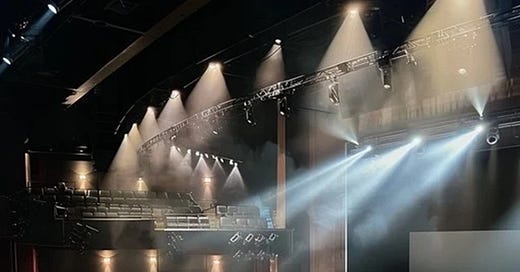They rise. I don’t.
The curtain falls, the house lights come up, and almost without fail, the audience leaps to its feet in a standing ovation. I remain seated. Not out of laziness or snobbery, but because I saw the show through the eyes of a critic—and what I saw didn’t earn it.
That’s my job: to see, to evaluate, to discern. But in an age when standing ovations are as routine as intermissions, I’m left wondering—what are we really applauding?
What once was a rare, spontaneous gesture of genuine admiration has become a reflex, stripped of meaning. Audiences seem more interested in affirming their own good taste for having attended the show than in asking whether the performance actually warrants a standing ovation. Is it politeness? Peer pressure? An aching desire to feel moved, even when we haven’t been?
There’s a deeper tension at play here—between the critic’s responsibility to critique and the prevailing belief that “the customer is always right.” That phrase may work for department stores, but it’s corrosive to art. If audiences are always right, then what need is there for critical voices? What purpose do we serve, except to nag or nitpick?
And yet, criticism is not the enemy of art—it is its advocate. Our role is not to tear down, but to dig deep: to ask what worked, what didn’t, and why. To elevate the conversation, not rubber-stamp the production. But increasingly, it feels like nuance is unwelcome in the theater, both onstage and off.
Perhaps nuance is no longer necessary. Today’s audiences pay a steep price to be entertained—they want a return on their investment—spectacle, certainty, affirmation. A time out, not a reckoning. And so, companies give them what they want: comfort food theater, predictable arcs, feel-good endings. If a play dares to challenge or unsettle, the response is tepid at best—or worse, dismissive. Discomfort is no longer seen as a virtue in art, but as a customer service failure. Most just want to be entertained, not burdened by complexity or dragged down by gravity.
Is this erosion of discernment a theater problem, or a societal one? I suspect the latter. In an age of curated feeds and algorithmic echo chambers, we’re conditioned to like what we already agree with. Critical thinking takes effort—and frankly, people are tired and hungry for respite from the noise. Mental laziness has become a coping mechanism. Why wrestle with complexity when simplicity feels so much better?
So, we bemoan the stage’s declining relevance.
The issue may not be the art itself, but the changing audience. As the loyal, civically engaged subscriber base ages out, they’re replaced by theatergoers drawn to faster, flashier, more immersive fare—a shift that isn’t inherently bad, but one that forces theaters to walk a fine line between innovation and appeasement. In chasing broader appeal, too many seasons play it safe, favoring nostalgia over nuance, crowd-pleasers over confrontations. When programming becomes driven more by risk aversion than vision, theater starts speaking in generalities—and says less that truly matters.
Still, brave, original work exists. I’ve been in those rooms, felt that rare hush when a risk lands just right. Those standing ovations begin slowly, with awe, not obligation. But moments like that are increasingly rare—not because excellence has vanished, but because our appetite for it may be fading.
To be clear, I don’t resent audiences for enjoying a performance. Joy is part of the magic. But when every show gets a standing ovation, nothing stands out. Applause becomes noise—a roar without meaning. And art—real, ambitious, risk-taking art—gets lost in the clamor.
So yes, I stay seated. Not because I didn’t appreciate the effort, but because I believe in holding space for excellence. For honesty. For growth. Sometimes, the most respectful response to a middling show is to remain seated—and simply applaud. And sometimes, the highest compliment a critic can give is to say: “Not yet.”
“Not yet.”
It’s not a rejection. It’s a recognition—that the work aimed high, even if it didn’t quite get there. It’s an invitation to keep reaching, to sharpen the vision, to push beyond comfort and convention. Because theater, at its best, is not about perfection—it’s about pursuit. And the critic’s role is not to discourage that pursuit, but to honor it honestly. To say, “I see what you’re trying to do—and I believe you can do more.”
In that spirit, staying seated is not a refusal of praise, but a gesture of respect. It says: “You’re on the path. Just not yet.”





I wrote a short play about this very thing, being produced at Theatre Artists Studio at their summer shorts festival in June. I hope you can see it. And give it a standing O!
I feel exactly the same, Herb. Standing O has become the norm, so what is one to do when you see a truly brilliant performance?